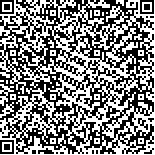|
| 引用本文: | 房祖业,陈晓东,吴咏诗,谭洁瑢,张玮恩,王正宇,林婷婷,查广才,舒琥.大刺鳅(Mastacembelus armatus)二、三、四碱基重复微卫星标记的筛选和特征分析.海洋与湖沼,2018,49(1):174-182. |
| |
|
| |
|
|
| 本文已被:浏览 2182次 下载 2067次 |

码上扫一扫! |
|
|
| 大刺鳅(Mastacembelus armatus)二、三、四碱基重复微卫星标记的筛选和特征分析 |
|
房祖业1, 陈晓东1, 吴咏诗1, 谭洁瑢1, 张玮恩1, 王正宇1, 林婷婷1, 查广才2, 舒琥1
|
|
1.广州大学生命科学学院 广州 510006;2.韩山师范学院食品工程与生物科技学院 潮州 521041
|
|
| 摘要: |
| 对大刺鳅(Mastacembelus armatus)进行简化基因组测序,开发二、三、四碱基重复类型的微卫星引物共105对(重复次数≥6),其中可稳定扩增的引物有50对(47.6%),通过多态性分析,发现有38个微卫星位点表现出多态性,从中随机选取三种重复类型微卫星各10对对北江群体进行遗传多样性分析,及各6对对澜沧江大刺鳅群体进行遗传多样性分析。结果显示,(1)在大刺鳅中二碱基重复微卫星位点筛选效率为50%,而三、四碱基重复的筛选效率分别为31.1%、35%。(2)北江群体的平均多态信息含量为0.649,比澜沧江群体(0.572)高,30个微卫星位点在北江群体中共检到235个等位基因,且93.3%的引物表现为高度多态水平,18个微卫星位点在澜沧江群体中共检到120个等位基因,66.7%的引物表现为高度多态水平。(3)二碱基重复的微卫星标记在两个野生群体检出的五项多态性指标高于三、四碱基重复。结果表明,二碱基重复的微卫星比三四碱基重复的微卫星具有更高的筛选效率和多态性,北江群体的遗传多样性比澜沧江群体高,本研究所筛选的引物可以应用于群体间遗传多样性分析和遗传图谱的构建,以及亲缘关系的鉴定等方面,为大刺鳅种质资源保护研究奠定分子基础。 |
| 关键词: 大刺鳅 微卫星 二、三、四碱基重复 多态性 |
| DOI:10.11693/hyhz20170600172 |
| 分类号:Q789;S968 |
| 基金项目:国家公益性行业(农业)重大专项,201303048号;广东省海洋渔业科技攻关与研发项目,A201601A05号;广东省科技计划项目资助,2016A030303064号,2014A020208145号;广州大学创业项目。 |
| 附件 |
|
| SCREENING AND CHARACTERISTIC ANALYSIS ON DI-/TRI-/TETRA-NUCLEOTIDE-REPEATED MICROSATELLITES IN MASTACEMBELUS ARMATUS |
|
FANG Zu-Ye1, CHEN Xiao-Dong1, WU Yong-Shi1, TAN Jie-Rong1, ZHANG Wei-En1, WANG Zheng-Yu1, LIN Ting-Ting1, ZHA Guang-Cai2, SHU Hu1
|
|
1.College of Life Science, Guangzhou University, Guangzhou 510006, China;2.School of Food Engineering and Biotechnology, Hanshan Normal University, Chaozhou 521041, China
|
| Abstract: |
| Thirty individuals of two wild fish Mastacembelus armatus populations from Beijiang River (BJP), Guangdong (average body weight 17.88g, and average body length 19.44cm) and from Lancang River (LCP), Yunnan (24.99g, and 20.89cm) were sampled to study the reduced-representation genome sequencing, from which 105 pairs of microsatellite primers were developed and were of di-/tri-/tetra-nucleotide-repeated microsatellite (the number of repeat was six or more, and 50 pairs (47.6%) of them yielded steady amplifiable primers. In addition, we found 38 microsatellite loci who had high polymorphism, from which we randomly selected 10 and 6 pairs each from the three types of repeat from BJP and LCP, respectively, to study the genetic diversity. Result presents that:(1) the efficiency of screening the di-nucleotide-repeated microsatellite primer was 50%, while that of the tri-and tetra-nucleotide-repeated ones was only 31.1% and 35%, respectively. (2) The average polymorphism information content (PIC) was higher in BJP (0.649) than LCP (0.572). We detected 235 alleles from 30 microsatellite loci in BJP and 93.3% of them were in high polymorphism level, while 120 alleles in 18 microsatellite loci in LCP and 66.7% of them were in high polymorphism level. (3) The di-nucleotide-repeated microsatellite markers in the two wild populations presented greater values of five polymorphic indexes than tri-or tetra-nucleotide-repeated ones. The above-mentioned findings indicate that di-and tri-nucleotide-repeated microsatellites are more effective in screening and more polymorphic than those of the tri-and tetra-repeated. BJP showed higher genetic diversity than LCP. The primers screened in this study could provide a reference to analyze genetic diversity among different populations, to establish their genetic linkage, to determine genetic relationships etc., and lay a solid ground for the protection of germplasm resources of M. armatus. |
| Key words: Mastacembelus armatus microsatellite di-/tri-/tetra-nucleotide repeat polymorphism |
|
|
|
|
|
